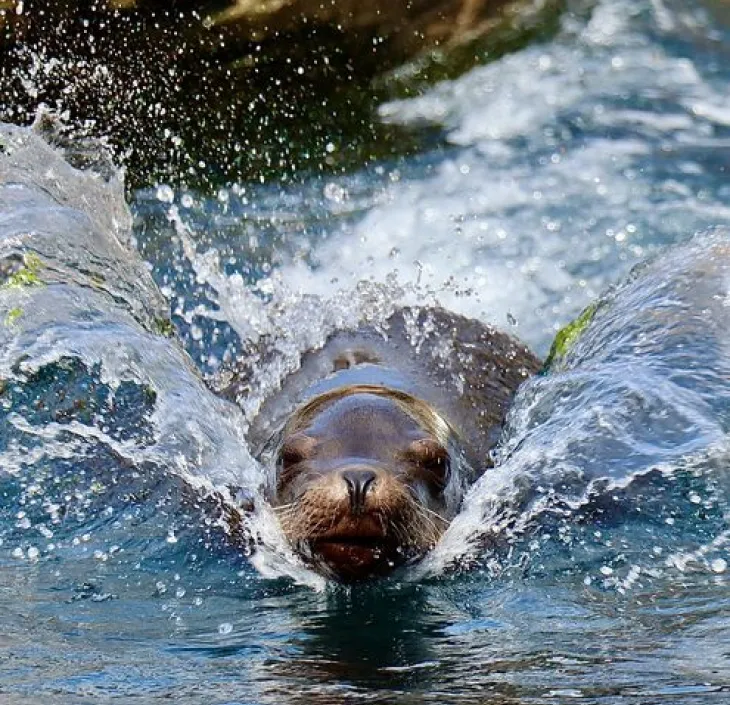Where is the animal to be found?
The sea-lion, also known as the California sea-lion, is found in open water and on rocky coasts on the Pacific seaboard of the USA and also in the Galapagos Islands. It is present in San Francisco Bay. It is not found in the extreme polar regions and is mostly present in the intertropical zone.
How can it be recognised?
A sea lion is a sea lion, a pinniped like walruses and seals.
Sea lions can be distinguished from seals by the presence of external ears and by their quadrupedal gait, which is linked to the use of their front flippers. When they swim, their front flippers enable them to propel themselves through the water. In the water, they use their rear flippers as paddles. The seal, on the other hand, has no external ears and crawls along the ground.
They measure between 2 and 2.50 metres and weigh between 110 and 250 kg.
Its diet consists of fish and molluscs. Its vibrissae or whiskers play an important role in searching for food and capturing prey.
Does a sea lion moult?
Sea lions moult once a year towards the end of summer. It sheds the previous year's hair, which changes colour, dies and falls out naturally.
Not all hairs fall out at the same time! In fact, there are differences in colour in the sea lion's coat, with the moult areas showing a new, darker coat than the one that will soon fall out, which is lighter.
As the sea lion only moults once a year, if it loses hair during the year or if a vet has to shave an area of the body, the hair will only grow back at moulting time.
This natural phenomenon is linked to the animal's natural life cycle and hormonal cycle.
Molting requires a lot of energy. Moreover, the areas of the animal's body that are in the moulting phase are warm. To compensate for this calorie loss at this time of year, the diet of the sea lions at Nausicaá is adapted by feeding them fish that are richer in fat, to prevent them from losing weight.
What is distinctive about it?
Sea-lions reach sexual maturity at around 4 or 5 years' old. The male has a harem that may comprise up to twenty females.
Sea lions bark... to show others who is the leader, to communicate with each other or to warn others of danger.
Why do they sometimes raise a flipper out of the water?
This is known as thermoregulation. When they get too hot, sea lions dissipate heat through their flippers. Through this phenomenon, they can adapt their body temperature to the temperature of the water and the ambient air.
What is their life expectancy?
In the wild, sea lions live up to 15 years. In a centre like Nausicaá, their life expectancy can be as much as 25 years.
At Nausicaa, the temperature of the tanks varies from 18° to 20°C. Sea lions prefer cold water to warm water, so they have no problem tolerating winter temperatures.
Are sea lions playful?
All day long, sea lions chase each other and grab each other by biting. The handlers stimulate and reward them with toys that they hide in their surroundings.








